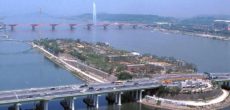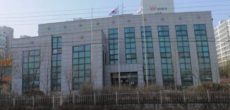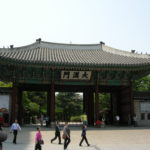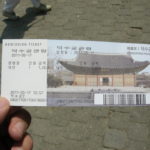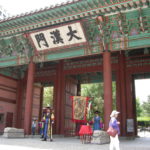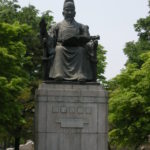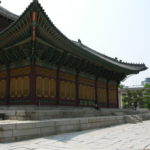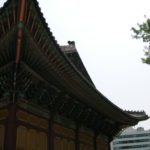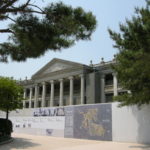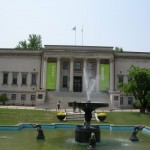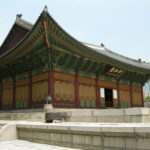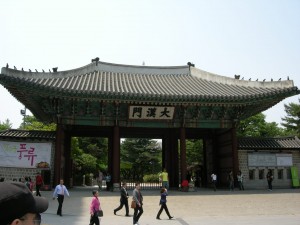
Deoksugung Palace Entrance
Deoksugung Palace is one of the five palaces from the Jeseon Dynasty which lasted over 500 years. Deoksugung was originally built as a residence for Prince Wolsan, the elder brother of King Seongjong (1469-1494). After all other palace buildings were destroyed by fire during the Japanese invasion of 1592, King Seonjo (1567-1608) established a temporary residence here. King Gwanghaegun (1608-1623), who succeeded King Seonjo, named the palace Gyeongungung in 1611. King Injo (1623-1649) held a coronation ceremony in Jeukjodang Hall in 1623. It was here in 1897 that King Gojong proclaimed to the nation and the world the establishment of the “Great Han Empire”. The palace was renamed Deoksugung in 1907, when King Sunjong ascended the throne and it has been known by that name to this day. In 2007 a major restoration project was undertaken.
The palace was 3 times larger than it is today, encompassing the whole area around the present city hall, Seoul Plaza and Jeong-dong area. As foreign diplomats and missionaries arrived in Seoul, some western-style buildings also appeared inside Deoksugung palace.
Although located in the busy centre of Seoul, Deoksugung is very tranquil. On first arriving at Deoksugung palace you will see Daehanmun Gate. This is the main gate of Deoksugung Palace. A daily show of the changing of the guards can be seen here at 11:00, 14:00 and 15:30. After entering Daehanmum gate you will pass over Geumcheongyo bridge. After heading straight you will come to Junghwa Gate and Junghwajeon. All of the official affairs took place in this building and meetings with foreign convoys. This is the main building in Deoksugung Palace. Originally it was two stories high and a wall was built around it. Now it stands at one story and the wall is gone, leaving the Junghwa gate pointless.
At the far end of this small palace we can find Seokjojeon Hall, which means stone house. This was built to add a more western feel to the palace at the start of the 20th century. It was designed by British architect G.R Harding. The building was rarely used as most westerners were kicked out of Korea by the Japanese after they won the Russo-Japanese war. Eventually the Japanese turned it into an art gallery. After gaining independence in 1945 the building was used to hold talks between America and the Soviets. After the Korean war it became the National Museum of Korea until 1986. The building is still undergoing restoration.
Also inside Deoksugung Palace you can find a statue of Sejong The Great. For more information about Sejong click here.
Admission / Opening Hours:
Open from 09:00 to 21:00 and closed every Monday. Tickets stop going on sale one hour before closing.
Adults: 1,000 WON
Children: 500 WON
How to get to Deoksugung Palace:
Take line one to City Hall Station and leave exit 2 or Take line two to City Hall Station and leave exit 12. With both stations you can’t miss the palace when you leave the exits.
View larger map



